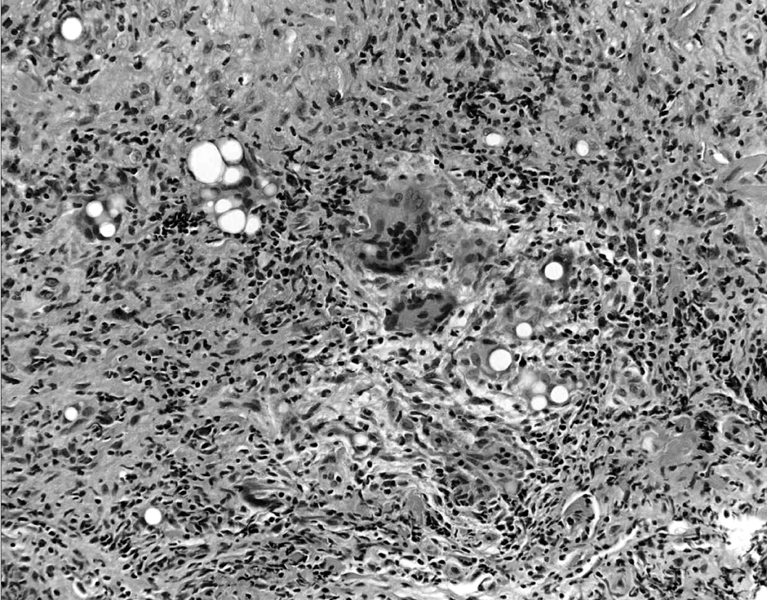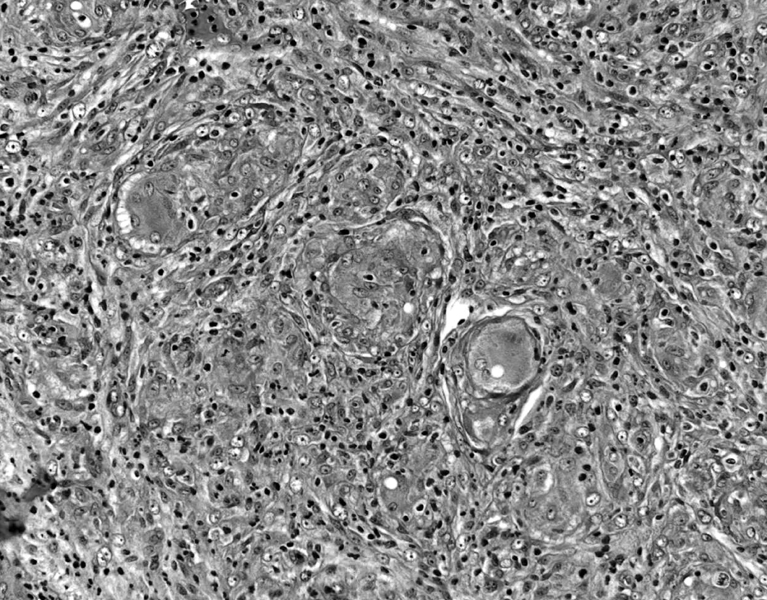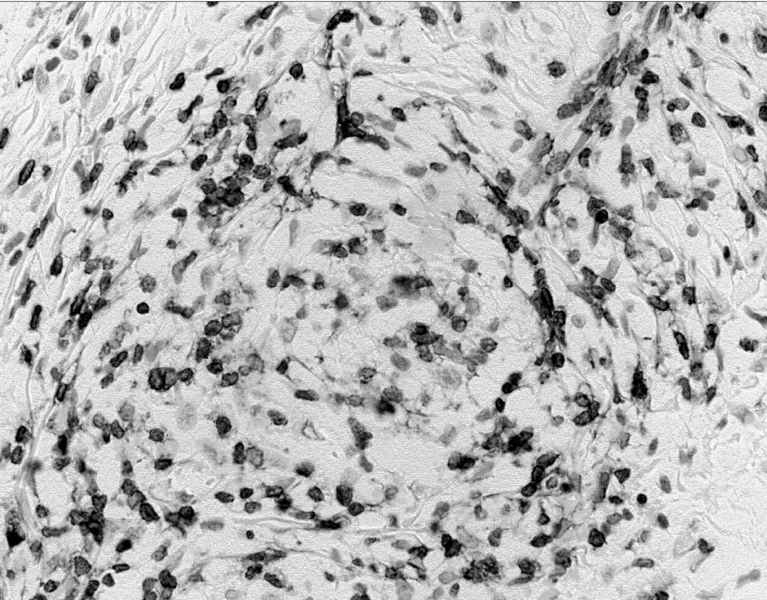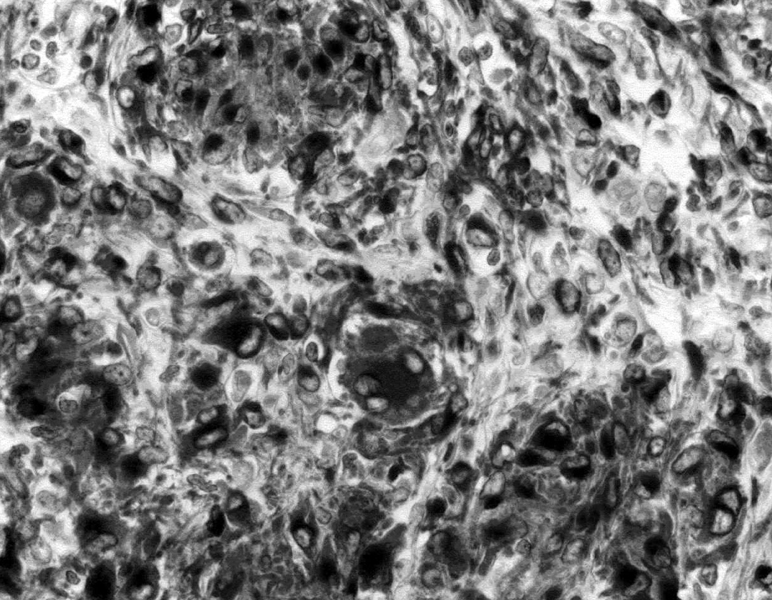Yonsei Med J.
2007 Jun;48(3):421-424. 10.3349/ymj.2007.48.3.421.
Incidence Rate of Injection-Site Granulomas Resulting from the Administration of Luteinizing Hormone-Releasing Hormone Analogues for the Treatment of Prostatic Cancer
- Affiliations
-
- 1Department of Urology, Saga Prefectural Hospital, Koseikan, Saga, Japan. shiota1976@yahoo.co.jp
- 2Department of Pathology, Saga Prefectural Hospital, Koseikan, Saga, Japan.
- KMID: 724096
- DOI: http://doi.org/10.3349/ymj.2007.48.3.421
Abstract
- PURPOSE
Granulomas resulting from the administration of luteinizing hormone-releasing hormone analogues (LH-RH analogues) are thought to be very rare. We report on our clinical experience with injection-site granulomas that result from the administration of LH-RH analogues, and we evaluate the incidence rate of these granulomas. MATERIALS AND METHODS: We used the clinical records of 118 patients who were administered LH-RH analogues in 2005. We describe the clinical data of patients who experienced injection-site granulomas and evaluated the incidence rate. RESULTS: Five patients demonstrated injection-site granulomas due to LH-RH analogue administration. The incidence rate was 4.2% (5 of 118 patients). Most of the granulomas occurred after the first or second administration of 11.25mg of leuprorelin acetate. CONCLUSION: The occurrence of granulomas resulting from the administration of LH-RH analogues was thought to be very rare. Our study, however, revealed a higher incidence rate than expected, especially for leuprorelin acetate.
MeSH Terms
-
Aged
Aged, 80 and over
Antigens, CD/analysis
Antigens, CD3/analysis
Antigens, Differentiation, Myelomonocytic/analysis
Antineoplastic Agents, Hormonal/administration & dosage/adverse effects
Gonadotropin-Releasing Hormone/administration & dosage/*adverse effects/analogs & derivatives
Goserelin/administration & dosage/adverse effects
Granuloma/*etiology/metabolism/pathology
Humans
Injections, Subcutaneous/adverse effects
Leuprolide/administration & dosage/adverse effects
Male
Prostatic Neoplasms/*drug therapy
Figure
Cited by 1 articles
-
Foreign Body Granuloma Secondary to Leuprorelin Acetate
Bo In Lee, Jun Young Lee, Hyung Ok Kim, Young Min Park
Ann Dermatol. 2014;26(2):254-255. doi: 10.5021/ad.2014.26.2.254.
Reference
-
1. Fawcett HA, Smith NP. Injection-site granuloma due to aluminum. Arch Dermatol. 1984. 120:1318–1322.
Article2. Whitaker IS, Fazel MZ, Joshi HB, Moseley RP, Turner WH. Leuprorelin acetate granulomas: recurrent subcutaneous nodules mimicking metastatic deposits at injection sites. BJU Int. 2002. 90:350.
Article3. Saxby M. Leuprorelin acetate granulomas: recurrent subcutaneous nodules mimicking metastatic deposits at injection sites. BJU Int. 2003. 91:125.
Article4. Yasukawa K, Sawamura D, Sugawara H, Kato N. Leuprorelin acetate granulomas: case reports and review of the literature. Br J Dermatol. 2005. 152:1045–1047.
Article
- Full Text Links
- Actions
-
Cited
- CITED
-
- Close
- Share
- Similar articles
-
- Current Concepts in Androgen Deprivation Therapy
- The mechanism of Arginine-stimulated growth hormone secretion
- A Case of 8 Year-old Boy with Testicular Microlithiasis Showing Bilateral Testicular Enlargement
- A Case of Generalized Hypertrichosis After Treatment with Topical Minoxidil
- Ovulation induction with combined gonadotropin-releasing hormone agonist(K-Trp-Luteinizing houmone-Releasing hormone:decapeptyl) and gonadotropins in women with polycystic ovarian disease





